Seismic Processing Velocities - Geophysics
Introduction to 3D Seismic Velocities for Seismic Processing
4.51 (69 reviews)
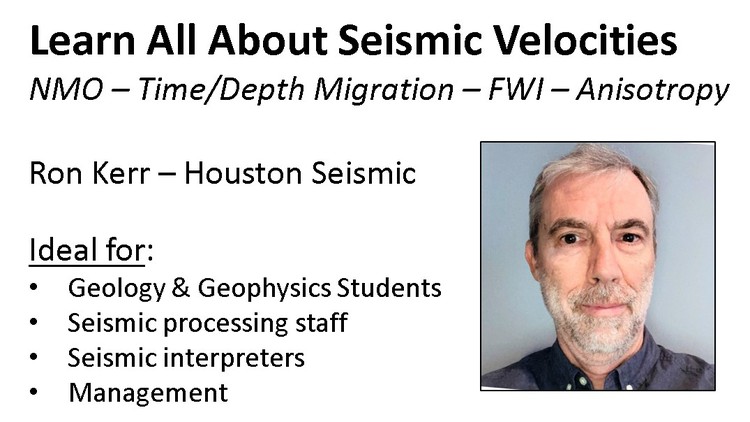
243
students
2 hours
content
Mar 2025
last update
$49.99
regular price
What you will learn
The attendee will come to more fully understand the simplicities – and complexities – of seismic velocities.
Why are velocities so critical in the seismic processing method? How are velocities used in time migration compared to depth migration?
What are tomography and full waveform inversion? How do I understand this from a big-picture view? What is anisotropy? How can 5D interpolation be part of this?
These a non-mathematical presentations, showing the basics. Concepts are shown so that the viewer will better understand how and what these velocity terms mean.
This will help 3D seismic interpreters, geologists, geophysicists and seismic processors.
How are nmo velocities picked? What are flat gathers? How can accurate or inaccurate velocities image my depth structure?
Screenshots
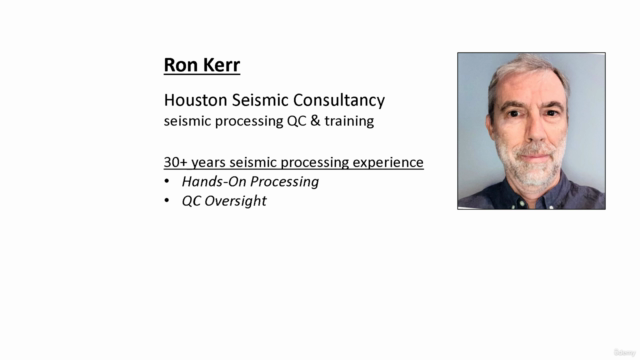
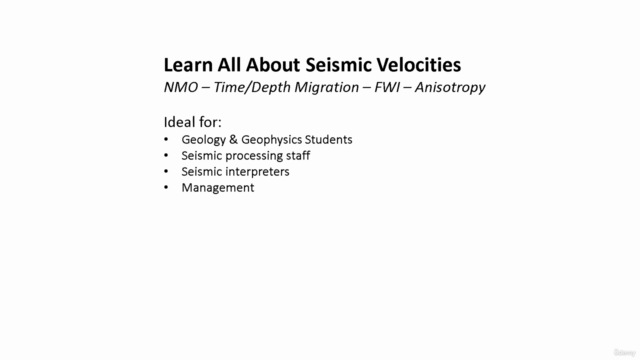
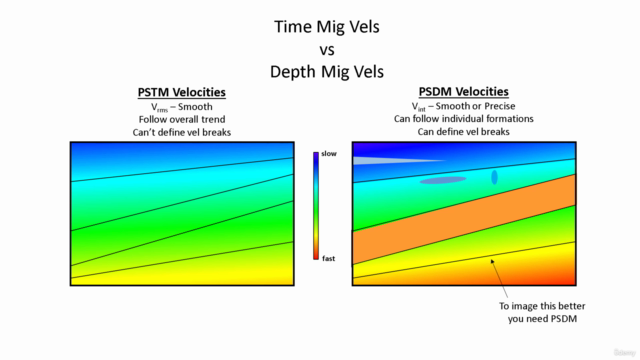
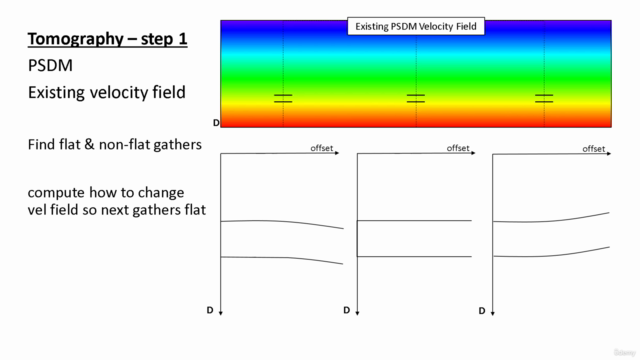
Related Topics
4804966
udemy ID
7/28/2022
course created date
8/9/2022
course indexed date
Bot
course submited by